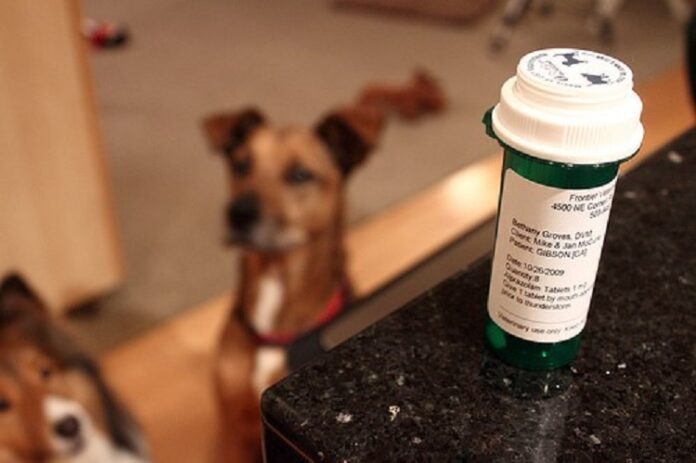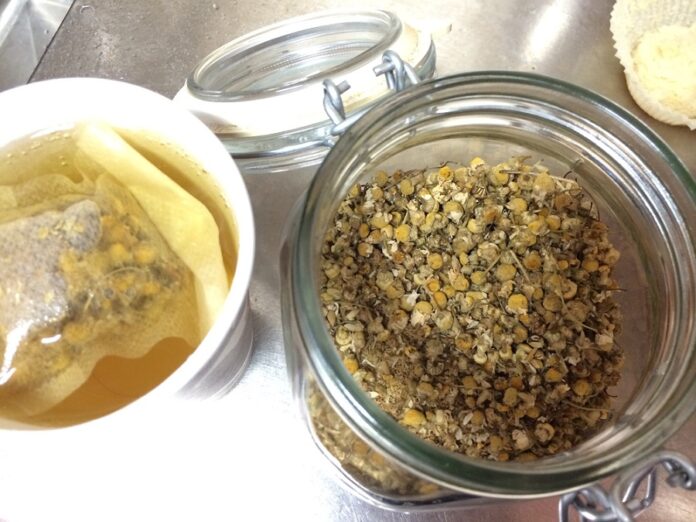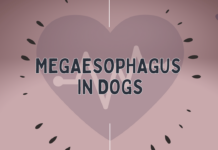A sedative is any substance that can reduce irritability or excitement by inducing sedation, i.e. it puts the brain to sleep in both animals and human beings.
This specific type of medication, which also includes anesthetics are used to either calm down a dog or put him or her to sleep for a short duration of time.
All in all, sedatives are used for a wide variety of reasons, including nail trimming, travel, and many others, but while choosing sedatives, dog owners should take some precautions.
Research has shown that an animal’s heart rate, temperature, and respiration all drop once the animal is under sedation.
In some very rare cases, the animal may also become dehydrated. When an animal becomes dehydrated while under sedation, its general health and well-being are usually at risk.
Also, if the pet wakes up, feeling alone and confused after sedation, the grossness and panic that may follow is usually much worse than the one you were hoping to avoid.

All in all, dogs can suffer different types of anxiety such as social anxiety, where they tend to become anxious and nervous around humans or other dogs. Also, they can suffer noise anxiety where they tend to become afraid of unusual or loud noises.
Finally, they are also prone to separation anxiety where they become afraid and anxious when left alone.
The proper positive training usually takes some time, hence as a dog owner you will be forced to take some actions before the dog becomes fully trained. Nonetheless, there are several sedatives and anesthetics that you should know. Depending on their functionality or intended functions, sedatives and tranquilizers can be divided into several groups.
Sedatives for dogs: 3 broad categories of conventional sedatives
Sedatives and tranquilizers
Sedatives and tranquilizers are mainly used to cool down an animal for various procedures such as x-rays, drawing of blood and trimming of nails. For a much faster result, sedatives and tranquilizers are usually injected directly into a muscle or into the bloodstream through the veins.
Furthermore, sedatives and tranquilizers are also used as pre-anesthetics so as to calm down the dog before the anesthesia is administered.
One good example of a pre-anesthetic is Diazepam/valium that is mainly used to calm down the dog before surgery.
When administering sedatives and tranquilizers the animals must not be pregnant because the sedatives can lead to birth defects.
Another commonly used pre-anesthetic is Acepromazine, but like Diazepam, Acepromazine still has its limitations; should not be used on dogs that are prone to seizure attacks.
Analgesics
Analgesics are mainly used to provide pain relief that is also commonly known as analgesia in the field of medicine.
Among the analgesics, there is a group of short-acting drugs that are mainly used to bring an animal back to alert state because they have reversal agents.
One good example of analgesics is Medetomidine Hydrochloride also commonly known as Domitor and is mainly used as a sedative and an analgesics in animals
All in all, analgesics are mainly used for minor procedures that may not require muscle relaxation such as the removal of porcupine quills. There are mainly two ways through which analgesics are mainly administered, intravenous (IV) or intramuscular (IM).
After administration of the drug, the animal is usually allowed to calm down for 5 to 10 minutes as the drug is taking effect.
After the completion of the procedure, the dog will be given Antisedan (Atipamezole Hydrochloride) which usually reverses the effect of the analgesia that was previously administered.
General anesthetics
General anesthetics are mainly used when the dog is required to be unconscious for a long duration of time such as surgery. Once they have been fully absorbed into the bloodstream, general anesthetics will block any pain sensation, cause muscle relaxation and prevent movement during the surgical procedure.
One good example of a commonly used general anesthetic is Thiopental, which is a short-acting barbiturate that is commonly used for very short procedures such as the removal of porcupine quills.
When injected into the vein, unconsciousness usually occurs within a minute after the drug has been administered. But for certain dog breeds such as gray hounds, the recovery period is usually much longer when compared to other dog breeds.
The long recovery period is usually attributed to the differences in the way the body disintegrates the anesthetic and also the animal’s low body fats.
Tatazole and Ketamine are also good examples of injectable general anesthetics. The two anesthetics are mainly used for short medical procedures such as restraint or the Draining of abscess.
Nonetheless, Ketamine and Tatazole usually function in a slightly different manner when compared to other injectable anesthetics; they usually produce a dissociative anesthesia.
After the production of the dissociative anesthesia, the animal becomes unaware of what is happening though the eyes will still be open, and all the reflexes will be fully functional.
When a gas anesthesia is used, the dog is usually given a stimulation agent, like the commonly used thiopental to make him unconscious. The anesthetic gas is usually mixed with oxygen gas, then administered through a facial mask.
Natural sedatives for dogs: 6 herbal sedatives / home remedies
Apart from being some depressants, most conventional drugs are also likely to come with undesirable side effects.
The various unattractive side effects that conventional drugs may cause include nausea, insomnia, constipation, weight gain, increased appetite and many others.
Hence, most dog owners have now turned to natural remedies as a suitable alternative to conventional medicines. Apart from being reliable, natural sedatives are also very effective when it comes to alleviating or minimizing anxiety attacks.
Also, most of the natural sedatives will have very minimal side effects and in some cases, no side effects at all.

A good example of a conventional sedative is Acepromazine, which is often prescribed to treat anxiety in dogs. The side effects that come with Acepromazine include an increased heart rate, allergic reactions, depressions, and finally a lack of coordination.
Furthermore, like discussed earlier, conventional sedatives such as Acepromazine should not be used on dogs that are prone to seizure attacks.
All in all, there are several natural therapies such as herbs and essential oils that can be used to alleviate or lessen the various symptoms of anxiety attacks.
The various side effects that are usually caused by conventional sedatives are one of the main reasons why most dog owners are opting for herbal sedatives as an alternative.
If you are looking for an ideal way to calm down nervous dogs that may be prone to anxiety, then herbs are just what you need. Apart from being mild, herbs are also non-addictive with no or very minimal side effects.
Furthermore, most of the herbs that are used as natural also contain essential nutritious tonics that play a key role in supporting a dog’s nervous system.
All in all, there are several types of herbs that are used as natural sedatives. So as to achieve a synergistic effect, some of the natural nerve-calming herbs are combined then administered to the dog.
All in all, here are five herbs that are widely used as sedatives, especially if the dog is aggressive, overly excited or anxious.
Chamomile
Chamomile is an herb that contains the active ingredient Apigenin, which is mainly used on to reduce anxiety in dogs and humans that are either stressed out or easily stressed.
Apigenin is one of the most research elements in the field of medicine because it works in the same way aspirin does, by inhibiting the production of chemical inhibitors. Furthermore, apart from containing the active ingredient, Apigenin, Chamomile has another chemical ingredient, called Chamazulene.

Chamazulene plays a bigger role especially in cases where the anxiety may lead to gastrointestinal disorders such as bloating, pain or gas. All in all, Chamomile can be given to the dog as tea, or you can soak a treat in the tea.
Skullcap
Regardless as to whether it is in its raw form or as a processed product, skullcap is an effective sedative that can be used to treat anxiety and hyper excitability in dogs. As a medicinal herb, skullcap is made up of some valuable constituents such as Catapol, Scutellaria, volatile oils, Tannins and bitter iridoids.
Nonetheless, despite all of Skullcap’s medicinal values, most veterinary officers warn against the prolonged usage of this herb either as a sedative or any other medicinal purpose.
Valerian
Apart from reducing tension, the valerian herb is also effective in alleviating anxiety and over excitability in dogs. Unlike alcohol and all the other pharmaceutical sedatives, the valerian herb is a safe and gentle sedative that does not affect the brain in any way.
The fall root of the valerian herb is the part that is usually used in the formation of various treatment options. In some cases, the upper part of the plant can be used though the final product is usually much weaker.

All in all, this herb is used to alleviate anxiety in dogs and is also used to reduce physical pain in dogs. Like any other medicinal herb, the correct dosage must be observed at all times.
Oat
Like most of the aforementioned herbal medicines, oat was previously used on humans to soothe itches, flakes, and dryness. It is the soothing property that drove many researchers to try this herb on dogs as a safe alternative to herbal medicine.
Currently, Oat is used on dogs to relieve depression, calm down their nervous system and ease stress. If the dog is stressed out due to dry skin or itchiness you can alleviate his or her stress by giving him a rubdown with the oat seed tea.
California Poppy
Regardless as to whether the stress that your dog usually experiences is part of his day today disposition or triggered by any other factor, California Poppy can be essential in alleviating anxiety and stress.
Poppies are widely known for their ability to produce heroin, which are very strong painkillers that are used in the field of medicine.

When given to the pet in the right amounts, the effects of California Poppy is truly remarkable. California poppy is widely used to alleviate tension, anxiety and reduce any difficulty in sleeping, in dogs by stabilizing his or her mind’s emotional working.
Wood Betony
Wood Betony is mainly used as a sedative when a dog’s inner uproar leads him or her to have very tense muscles. When a dog experiences tension headaches, the discomfort of the face and head nerves only contributes to the throbbing headache.
All in all, wood betony not only assists easing a dog’s tension but also alleviate any form of discomfort.
How to administer natural sedatives
Natural sedatives are preferred by many dog owners because they are user-friendly and very easy to deliver. If it is your first time to administer natural sedatives to your dog, then you should use his or her level of stress as a guide.
For a dog that is completely hyped up, you will want to calm him down as quickly as possible.
First and foremost you will be required to combine all the necessary herbs then squirt a few drops of the herbs in the dog’s mouth for a faster effect.
If you are administering the herbs to a puppy who is always stressed or worked out on a day to day basis.

Then, you might want to squeeze a few drops of the mixture in his day-to-day water bowl, or you can design a tube collar for him or her to put on.
All in all, if you are looking for an efficient method that is going to guarantee result then herbal tea is the way to go. By steeping the herbal medicine into a tea then give him or her a spa bath with the tea, he or she will be relaxed for the whole night.
Also check our guide on how to recognize dog excessive panting




